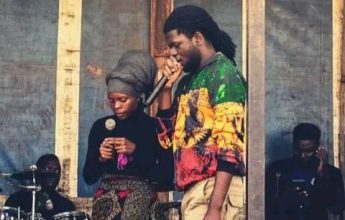Weaving his way to survival
 He sits quietly weaving the reeds into each other craftily. As if in sync with some kind of rhythm, the reeds follow a pattern and as minutes pass, the basket takes shape. This he does until his hands tire. In a day, he is able to make at least eight big baskets which he sells by the roadside.
He sits quietly weaving the reeds into each other craftily. As if in sync with some kind of rhythm, the reeds follow a pattern and as minutes pass, the basket takes shape. This he does until his hands tire. In a day, he is able to make at least eight big baskets which he sells by the roadside.
Samson Chimimba, a basket maker who plies his trade along the Magalasi Road in Malawi’s commercial city, Blantyre, says the craft is a form of his livelihood. He has never regretted the day he decided to learn the art of basket making, when his friends mocked him. He says the art is one of a kind; he has been reaping its fruits since 10 years ago.
According to Burke Museum, basketry (basket weaving) is a process of weaving unspun vegetable fibres into a basket or other similar form. Those who weave baskets are called basket makers or basket weavers.
It does not yet have the pomp of cool craft such as the other kind of arts, but it might be the next big thing on the art business.
“I started making baskets in 2003 after admiring someone who was in the business, but of course, the craze to learn the art has always been in my heart. I had to pay…K20 000 to the person who taught me basketry.
“I do not think I wasted my money because of how much I have [made] since then, I am able to fend for myself, my wife and two children from the business as it is the only thing that I do here in town,” said Chimimba.
He said he makes baskets of differentkinds that include flower baskets, gift baskets, love baskets, fruits plate and oval baskets and on a good day, he makes at least five big baskets or eight small baskets.
“To me, basket making is not a hard thing to do because it is in my blood. Provided I have materials, I can make as many baskets as I like in a day,” he said.
Though Chimimba finds basketry rewarding, he says the materials used are seasonal and the business itself is seasonal.
Of course, basketry is made from a variety of fibrous or pliable materials and anything that will bend and form a shape. Examples include pine straw, stems, animal fur, hide, grass, thread and wood.
But the materials Chimimba uses, namgoneka stems, which he buys from Balaka, are scarce during the rainy season. The business is usually hot during summer when weddings take place.
Apart from wedding planners, Chimimba said caucasians are also major customers of his baskets.
He said with proceeds from basket making, he is building a house at his home village and soon after completing that project, he will start building another one in town.
He said the highest a person can pay for a basket is K3 500 and the lowest is K300 depending on the size and when wedding ceremonies are at their peak, Chimimba sells up to 50 baskets per day.
He said the good thing about art is it can always be transferred from one generation to another.





